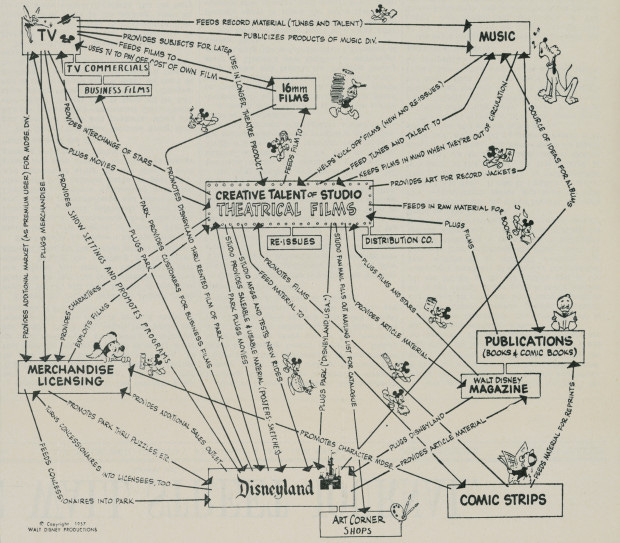How Walt Disney Built an Unbreakable Empire: The Leadership Flywheel Every Visionary Needs
Learn how a single diagram from 1957 reveals the secret to sustainable growth, brand synergy, and long-term leadership success.
🔥 The Leadership Flywheel You’ve Been Missing
In 1957, Walt Disney sketched a map—not just of his company, but of the future of leadership.
This wasn’t just about movies or Mickey Mouse. It was about designing a business that could scale, adapt, and synergize every piece of itself into an unstoppable force. That map became a blueprint for modern empires—and it all revolved around one simple but profound idea:
Your creativity is your core engine—but only if everything else feeds it back.
This episode decodes Disney’s now-famous “synergy chart” and breaks down how YOU—yes, you—can use the same thinking to build a self-sustaining leadership ecosystem.
🎬 Episode Recap: The Disney Framework of Self-Aware Leadership
We walk through Disney’s 1957 strategy chart and show how every division (TV, music, merchandise, Disneyland) wasn’t just a revenue stream—they were amplifiers of each other.
Theatrical films created IP that fueled everything else.
TV didn't just promote films—it tested ideas, recycled content, and generated merchandise demand.
Disneyland wasn’t just a theme park—it was a living ad, a brand lab, and a sales engine.
Everything fed back to the creative core.
Walt Disney didn’t just diversify—he orchestrated feedback loops that kept compounding.
That’s the real takeaway: Great leaders don’t just scale—they synergize.
💡 Actionable Insights for Self-Aware Leaders
1. Build from a Creative Core
Your “theatrical films” might be your thought leadership, product, or IP. Everything must start with and revolve around this.
➡️ Application: Define the ONE thing your brand creates that no one else can—and ensure every part of your business exists to amplify it.
2. Design Feedback Loops, Not Silos
Disney’s genius wasn’t in expansion—it was in circular value. TV fed films, which fed merchandise, which fed parks… which fed it all back.
➡️ Application: Map how each part of your business or team feeds others. Then ask: Are these flows visible, intentional, and measurable?
3. Treat Promotion as Experience
Disneyland didn’t “advertise”—it was the ad. Your user experience is your best brand builder.
➡️ Application: How can your product, service, or culture embody your message so deeply that people share it without you asking?
4. Monetize in Multiple Modes
The same Mickey Mouse could show up in a movie, on TV, as a plush toy, and in a comic strip. IP was multiplied—not duplicated.
➡️ Application: Ask yourself: How many formats or channels can one idea take on? Leaders today must think like media producers, not just product makers.
5. Think in Ecosystems, Not Campaigns
Disney's strategy was never about the next hit. It was about building an ecosystem that couldn’t stop producing hits.
➡️ Application: Stop launching and start looping. Build flywheels that turn every success into a new starting point.
✨ Notable Quote
“You don't build it for yourself. You know what the people want and you build it for them.” — Walt Disney
Let that sink in. Visionary leadership is less about genius, more about empathetic architecture.
🎧 Listen & Lead Differently
This is more than nostalgia—it’s a masterclass in self-aware leadership architecture. If Walt Disney could blueprint a resilient empire in 1957 with pen and paper, imagine what YOU can do today.
👉 Listen now to uncover the full breakdown—and start mapping your leadership flywheel.
🔔 Subscribe for more self-aware strategy.
💬 Drop your take in the comments—how would you design your leadership ecosystem?
🎯 Ready to go deeper? Join our Inner Circle for exclusive resources, worksheets, and leadership prompts.
💥 Final Reflection
Every great leader eventually learns: scaling isn’t just about doing more—it’s about connecting more. The future belongs to leaders who design systems that think, breathe, and grow with them.
The 1957 Disney chart isn’t just history. It’s your blueprint—if you’re bold enough to follow it.



This image has long been an inspiration to me as a modern marketer. Loved your accompany commentary!